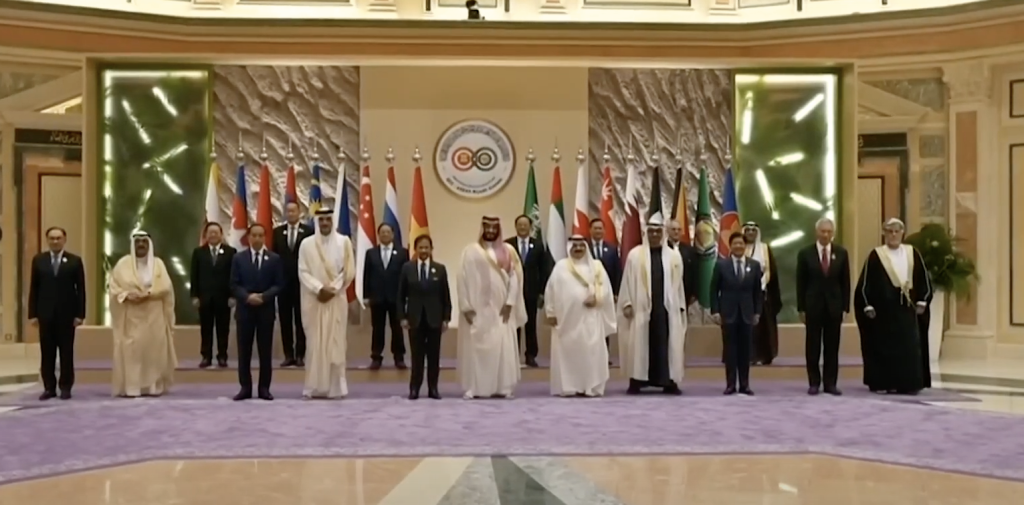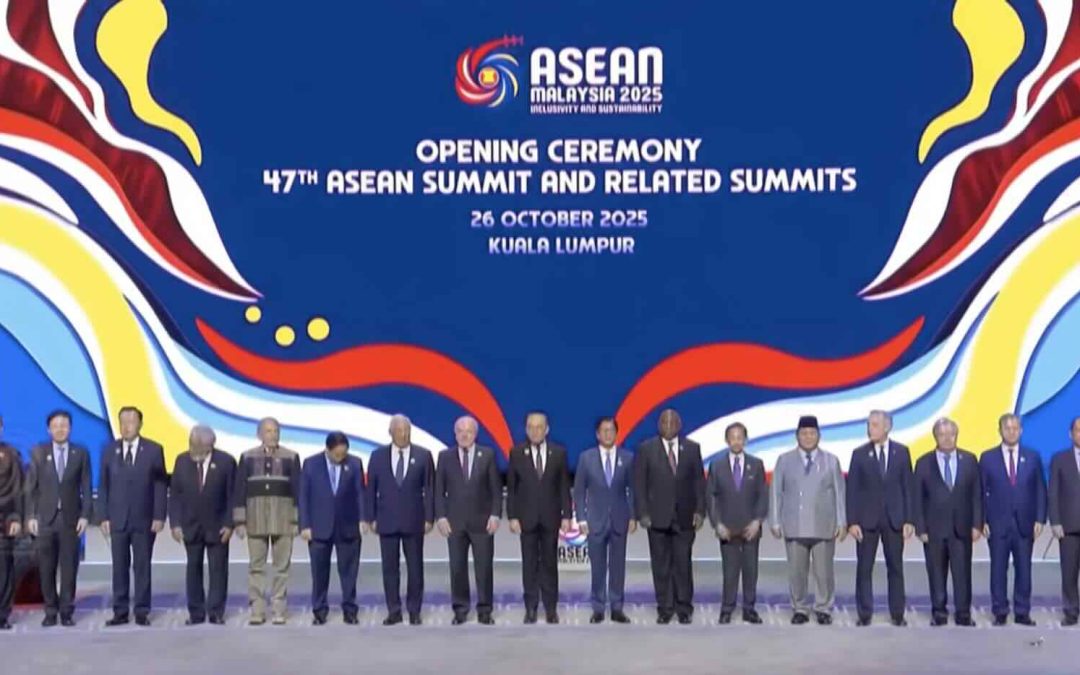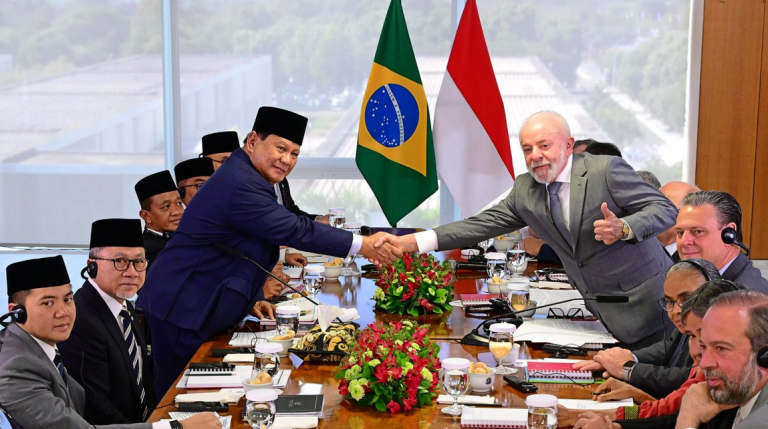The 46th ASEAN Summit in Malaysia on May 26, 2025, marked a crucial moment for ASEAN to officially launch the ASEAN Vision 2045 and formulate the Strategic Plan for Realizing the ASEAN Community Vision 2045 (ACV 2045). This mandate was outlined in the ASEAN Leaders’ Declaration on Developing a Strategic Plan for Implementing the ASEAN Community Vision 2045, adopted at the 44th and 45th ASEAN Summits in Vientiane, Laos, on October 9, 2025.
The draft ASEAN Community Vision itself was affirmed at the 43rd ASEAN Summit in Jakarta, Indonesia, on September 3, 2023. The draft ASEAN Community Vision 2045 is: Resilient, Innovative, Dynamic, and People-Centred ASEAN.
As chair and host of the ASEAN Summit, Malaysia has set a packed agenda. On May 26, 2025, ASEAN leaders are scheduled to meet with representatives of the ASEAN Inter-Parliamentary Assembly (AIPA), with representatives of ASEAN Youth, and with representatives of the ASEAN Business Advisory Council (ASEAN-BAC). Following this, ASEAN leaders will hold a retreat, followed by a plenary session. On the second day of the summit, ASEAN leaders will join the ASEAN-GCC + China Summit. This meeting will be followed by the second ASEAN-GCC Summit, where ASEAN leaders will meet specifically with leaders of the Gulf Cooperation Council (GCC).
Under the ASEAN chairmanship, key priorities will focus on the energy sector, connectivity, and regional independence, with constructive engagement with major powers in the region. Infrastructure development, renewable energy development, and enhancing ASEAN competitiveness through strengthening regional partnerships are priority agenda items for ASEAN under the ASEAN chairmanship.
Priorities for the ASEAN Chairmanship 2025:
- Strengthening ASEAN centrality by promoting strategic trust among nations through sustained dialogue, diplomacy, and goodwill
- Encouraging greater commitment to increasing intra-ASEAN trade and investment
- Ensuring that inclusivity and sustainability are central to efforts to build a regional community
ASEAN-GCC Summit + China as a Strategy to Strengthen Partnership with the South?
The ASEAN-GCC + China Summit is significant and aligns with the theme of Malaysia’s chairmanship: inclusivity and sustainability. This theme reflects Malaysia’s focus on realizing a more inclusive and sustainable ASEAN through the involvement of all members and a strong focus on environmental aspects. As ASEAN Chair, Malaysia strives to strengthen and expand economic partnerships with all parties, including those outside the ASEAN region.
ASEAN observers (Josah and Lin, 2025) view the ASEAN-GCC + China Summit as strategically important amidst global uncertainty, particularly since US President Donald Trump announced a reciprocal tax policy for its trading partners. ASEAN countries, among the US’s trading partners, have been significantly impacted by Trump’s policy.
Malaysian Prime Minister Anwar Ibrahim sees the strategic value of this trilateral meeting. In addition to raising ASEAN’s international profile, the Trilateral Summit can expand ASEAN’s economic ties with countries in the Middle East and China. The GCC comprises Bahrain, Kuwait, Oman, Qatar, Saudi Arabia, and the United Arab Emirates. ASEAN has an opportunity to play a global leadership role in the current context of shifting global governance. There is an opportunity to develop stronger South-South cooperation amidst declining US influence in the Global South and the US pursuing polarizing policies in the Middle East.

the First ASEAN-GCC Summit in Riyadh, 20 October 2023.
Source: KBRI Riyadh, Youtube.
The first ASEAN-GCC Summit was held in 2023, when Indonesia held the ASEAN chairmanship. Indonesia saw the importance of building bridges between Southeast Asia and the Gulf. Indonesian Foreign Minister Retno Marsudi hoped that this collaboration would boost the economies of countries in both regions and enhance people-to-people contact. ASEAN and GCC leaders agreed to hold the summit every two years.
The Urgency of a Concrete Action Plan to Strengthen the Three Pillars of the ASEAN Community
One of the key agenda items at the 46th ASEAN Summit is the launch of the ASEAN Community Vision 2045. This vision will reinforce the commitments of ASEAN leaders to continue cooperation in realizing a peaceful, stable, and prosperous region, as affirmed in the 1967 Bangkok Declaration.
The formulation of a strategic plan is crucial to assess ASEAN’s ability to realize the ASEAN Community Vision 2045. This formulation will continue to adhere to the three pillars of ASEAN, which have been in place since 2003.
At the 44th and 45th ASEAN Summits in Laos, it was emphasized that the formulation of the vision and action plan must be conducted with reference to a review mechanism to ensure relevance and flexibility in adapting to and responding to regional and global developments, as well as existing challenges and opportunities.
In the Political and Security Pillar, strengthening ASEAN’s centrality through dialogue and regional cooperation appears to remain an emphasis. This will be accompanied by increased capacity to address security issues at the regional and global levels. In the Economic Pillar, intensifying economic integration through increased connectivity can help accelerate inclusive and sustainable economic growth.
Within the Socio-Cultural Pillar, ASEAN needs to continue strengthening its identity within the context of the diversity of its nations to improve the quality of life.
The question that arises is the extent to which the review mechanism has been truly implemented, and how its results serve as a reference for the formulation of the Action Plan.
ASEAN has developed intensive cooperation in the economic sector, especially since the establishment of the Economic Community in 2015. However, intra-ASEAN trade still lags far behind trade between ASEAN countries and external trading partners. Investment in ASEAN also relies heavily on investors from countries outside ASEAN.
In this context, competition between ASEAN countries remains prominent as each ASEAN member seeks to enhance its trade relations with external partners. Each ASEAN country also seeks to attract investors from China, the US, Japan, Korea, and the European Union to establish businesses in their respective countries.
As Chair of ASEAN, Malaysia places great emphasis on increasing intra-ASEAN trade and investment. However, the extent to which the ASEAN Summit can produce political commitments and concrete action plans to address the issue of lagging cooperation among ASEAN countries remains to be seen.
Another challenge arises from the geopolitical context, where uncertainty is a key feature of current global security governance. The war between Russia and Ukraine remains unresolved, while the war between Israel and Hamas appears set to continue amid calls for a ceasefire. The position of ASEAN countries does not appear to be as solid as many had imagined. This is partly reflected in how ASEAN countries position their relations with China and the United States, which are currently engaged in fierce competition in the economic and political-security arenas.
ASEAN itself has unfinished business. ASEAN’s solution package for the conflict in Myanmar has not yet appeared to have succeeded in opening a new chapter in the history of ASEAN member states ruled by military regimes. The South China Sea tensions involving several ASEAN countries and China continue to haunt ASEAN’s relations with its dialogue partners.
Social and environmental justice among ASEAN communities remains elusive. The gap between rich and poor and the gender gap remain glaring in many ASEAN countries. The theme of inclusivity and sustainability chosen by Malaysia is quite relevant to reflect these interests. Malaysia’s chairmanship aims to encourage greater efforts to narrow the gap between development and inequality, improve living standards, and simultaneously mitigate the impacts of climate change.
However, the same question arises: how far can ASEAN go in addressing the disparities within ASEAN communities?
ASEAN requires new breakthroughs in realizing each of its community pillars. Strengthening ASEAN institutions is necessary, including the establishment of institutions with specific authority to focus on the development of each ASEAN pillar. Special commissions need to be established and responsible for representing the interests of all ASEAN communities, including implementing concrete efforts to narrow the gap of inequality among ASEAN nations.
At the very least, the ASEAN Secretariat should not merely perform administrative functions, but rather be strengthened to implement the agreements of ASEAN leaders collectively and institutionally.
Lack of Community Involvement in Formulating the People-Centered Community Vision
ASEAN Vision 2025 affirms the ideal of a people-centered ASEAN. This Vision formulation will likely be reiterated in ASEAN Vision 2045. However, ASEAN continues to be criticized as a highly state-centric organization that provides insufficient space for the people.
Even in formulating Vision 2045 and the Action Plan to realize it, ASEAN continues to practice its old practice of placing state representatives as the primary actors in the formulation.
At the 44th and 45th Summits in Laos, ASEAN leaders specifically tasked the High-Level Task Force on ASEAN Community Vision (HLTF ACV), the Ad-Hoc Working Group on the Development of the ASEAN Socio-Cultural Community (ASCC) Post-2025 Strategic Plan, and the ASEAN Coordinating Connectivity Community (ACCC) to collaborate in formulating Vision 2045 and the action plan to realize it. This assignment is to ensure that the formulation of the vision and action plan can be completed on time and launched at the ASEAN Summit in 2025.
The extent to which each task force involves the wider community in the formulation of the vision and action plan remains a public question.
This practice of “exclusion” or “limited involvement” keeps ASEAN at a distance from the grassroots, the primary stakeholders of ASEAN as a people-centered community. ASEAN will remain an elitist community, “exclusive to government representatives” from engaging in the process of true community-building.
Therefore, it is understandable that questions arise as to whether Vision 2025, launched in 2015, has truly been realized in 2025. The same question will likely arise again in 2045: Is ASEAN truly a people-centered community?
Author: Yulius P Hermawan
References
About ASEAN 2025. https://myasean2025.my/about/
ASEAN Leaders’ Declaration on the Development of Strategic Plans to Implement the ASEAN Community Vision 2045. Diadopsi pada KTT ASEAN ke-44 dan 45 di Vientien, Laos, 9 Oktober 2024.
2023 ASEAN Leaders’ Declaration on ASEAN as An Epicentrum of Growth. Diadopsi pada KTT ASEAN ke-43 di Jakarta, Indonesia, 5 September 2023.
ASEAN Secretariat. “Secretary-General of ASEAN to participate in the 46th ASEAN Summit, 2nd ASEAN- GCC Summit and ASEAN-GCC-China Summit, in Kuala Lumpur, Malaysia”, https://asean.org/secretary-general-of-asean-to-participate-in-the-46th-asean-summit-2nd-asean-gcc-summit-and-asean-gcc-china-summit-in-kuala-lumpur-malaysia
Sufiah Jusah dan Joanne Lin (2025) “The Inaugural ASEAN-GCC-China Summit: Economic Aspirations Amid Strategic Ambiguity.” China Global South Project. https://chinaglobalsouth.com/analysis/asean-gcc-china-economic-summit-2025/







